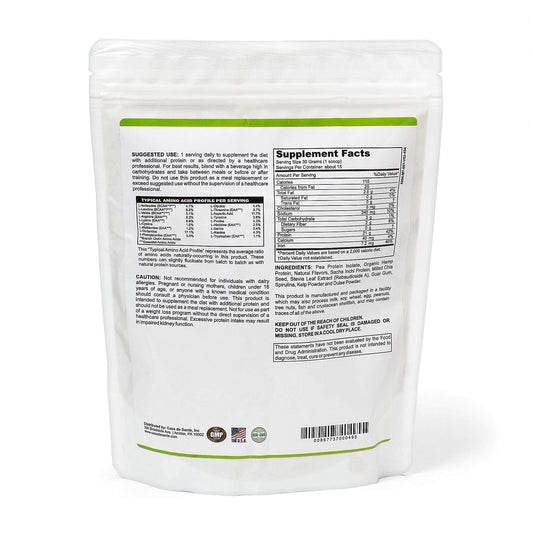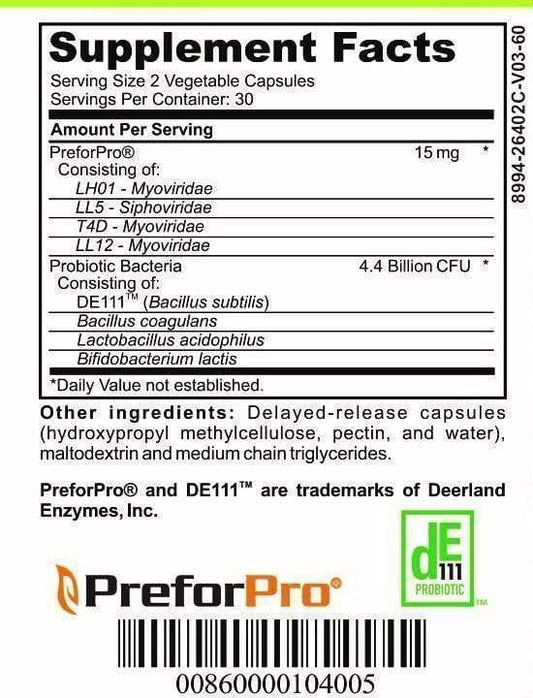Wheat Zoomer + Celiac Genetics by Vibrant Wellness Vs Skin Prick Test
Wheat Zoomer + Celiac Genetics by Vibrant Wellness Vs Skin Prick Test
Celiac disease is a condition that affects millions of people worldwide. It is an autoimmune disorder triggered by the ingestion of gluten, a protein found in wheat and other related grains. The disease can cause a wide range of symptoms, including digestive problems, fatigue, and skin rashes. To accurately diagnose celiac disease, healthcare professionals rely on various tests, including the Skin Prick Test and the Wheat Zoomer + Celiac Genetics test offered by Vibrant Wellness. In this article, we will explore these two diagnostic methods, their differences, and the factors to consider when choosing the most appropriate test for diagnosis.
Understanding Celiac Disease and Its Diagnosis
What is Celiac Disease?
Celiac disease is an autoimmune disorder characterized by the body's immune system reacting to gluten, a protein found in wheat, barley, and rye. When individuals with celiac disease consume gluten, their immune system mistakenly attacks the lining of the small intestine, leading to inflammation and damage. This immune response can cause various symptoms and long-term complications if left untreated.
While celiac disease affects people of all ages and backgrounds, it is estimated that around 1% of the population has the condition, and many remain undiagnosed. Early diagnosis and treatment are crucial to managing the disease and preventing further complications.
Traditional Methods of Diagnosis: The Skin Prick Test
The Skin Prick Test, also known as a skin prick or scratch test, is a commonly used method to diagnose allergies, including celiac disease. The test involves applying a small amount of gluten extract to the skin, usually on the forearm or back, and then gently pricking or scratching the skin's surface. If an individual is allergic to gluten, an allergic reaction, such as redness, swelling, or itching, may be observed at the site of the test.
The Skin Prick Test is relatively quick and straightforward, and results are typically available within 15-20 minutes. However, it is important to note that this test only indicates an allergic reaction to gluten and does not provide a definitive diagnosis of celiac disease. Further testing, such as blood tests and intestinal biopsy, may be necessary for a conclusive diagnosis.
Once an individual is suspected to have celiac disease based on the results of the Skin Prick Test, additional diagnostic measures are usually taken to confirm the diagnosis. Blood tests, such as the anti-tissue transglutaminase (anti-tTG) test, can detect the presence of certain antibodies that are commonly found in individuals with celiac disease. These antibodies are produced by the immune system in response to gluten ingestion.
If blood tests indicate a high likelihood of celiac disease, an intestinal biopsy may be performed. During an intestinal biopsy, a small tissue sample is taken from the lining of the small intestine and examined under a microscope. This allows healthcare professionals to assess the extent of damage to the intestinal villi, which are finger-like projections responsible for nutrient absorption. The presence of specific changes in the intestinal tissue, such as villous atrophy, is a strong indicator of celiac disease.
It is important to note that in some cases, individuals with celiac disease may have negative results on the Skin Prick Test or blood tests. This can occur if the individual has already started a gluten-free diet or if the immune response is not strong enough to produce detectable antibodies. In such cases, an intestinal biopsy is often recommended to obtain a definitive diagnosis.
Diagnosing celiac disease can be challenging due to the wide range of symptoms and the potential for false-negative results. It is essential for individuals experiencing symptoms such as abdominal pain, diarrhea, weight loss, fatigue, or nutrient deficiencies to consult with a healthcare professional who specializes in celiac disease.
Introduction to Wheat Zoomer and Celiac Genetics by Vibrant Wellness
Welcome to the world of advanced diagnostic testing offered by Vibrant Wellness! In this introduction, we will explore the fascinating science behind Wheat Zoomer and the role of genetics in celiac disease. Get ready to delve into the intricacies of immune responses and genetic markers!
The Science Behind Wheat Zoomer
At Vibrant Wellness, we believe in providing comprehensive assessments of an individual's immune response to gluten and related proteins. That's where Wheat Zoomer comes in. This advanced diagnostic test utilizes cutting-edge technology, including microarray analysis and molecular diagnostics, to detect specific antibodies and markers associated with celiac disease.
Unlike the Skin Prick Test, which primarily focuses on immediate allergic reactions, Wheat Zoomer takes a broader approach. By examining multiple components of the immune response, this test provides a more comprehensive evaluation. The insights gained from Wheat Zoomer help healthcare professionals in the diagnosis and management of celiac disease.
Imagine a world where healthcare professionals can accurately assess the presence and severity of gluten-related immune responses. Thanks to Wheat Zoomer, that world is becoming a reality. By utilizing advanced testing methods, we empower healthcare professionals with valuable information to guide their patients towards a healthier future.
The Role of Genetics in Celiac Disease
Genetics play a significant role in the development of celiac disease. At Vibrant Wellness, we understand the importance of genetic analysis in supporting the diagnosis of this condition. Our Celiac Genetics test is designed to analyze an individual's genetic profile and identify specific markers associated with an increased risk of developing celiac disease.
Have you ever wondered why some individuals are more susceptible to celiac disease than others? The answer lies in their genetic makeup. Certain genetic markers, such as HLA-DQ2 and HLA-DQ8, have been found to be strongly associated with an increased risk of developing this condition. Through our Celiac Genetics test, healthcare professionals can gain valuable insights into an individual's genetic predisposition to celiac disease.
By combining the Wheat Zoomer test with genetic analysis, healthcare professionals can achieve a holistic understanding of an individual's risk for celiac disease. This comprehensive approach not only improves the accuracy of the diagnosis but also enables healthcare professionals to predict the likelihood of developing complications associated with the condition.
Imagine the power of knowing an individual's genetic risk for celiac disease. With this knowledge, healthcare professionals can provide personalized guidance and support, helping individuals make informed decisions about their health.
At Vibrant Wellness, we are dedicated to pushing the boundaries of diagnostic testing. By combining advanced technology, such as microarray analysis and molecular diagnostics, with genetic analysis, we strive to revolutionize the field of celiac disease diagnosis. Join us on this exciting journey as we continue to explore the fascinating world of Wheat Zoomer and Celiac Genetics!
Comparing Wheat Zoomer with the Skin Prick Test
Accuracy and Efficiency: A Comparative Analysis
When it comes to accuracy, the Wheat Zoomer + Celiac Genetics test offers a more comprehensive evaluation of gluten-related immune responses compared to the Skin Prick Test. By analyzing multiple markers and antibodies, the Wheat Zoomer test provides a more detailed picture of an individual's immune reaction to gluten. This comprehensive analysis can help healthcare professionals make a more accurate diagnosis and develop a targeted treatment plan.
In terms of efficiency, the Skin Prick Test may be quicker to perform and produce immediate results. However, the Wheat Zoomer test, although requiring more time for analysis, offers a more comprehensive assessment and may eliminate the need for further testing in some cases. The choice between the two tests depends on the specific needs and preferences of the individual and their healthcare provider.
Pros and Cons of Each Test
A major advantage of the Skin Prick Test is its simplicity and accessibility. The test is widely available and relatively affordable, making it an accessible option for many individuals. However, its limited scope and potential for false negatives make it less suitable for accurately diagnosing celiac disease.
In contrast, the Wheat Zoomer + Celiac Genetics test provides a more comprehensive assessment, offering a higher likelihood of accurate diagnosis. This test analyzes various markers and antibodies, providing a more detailed understanding of an individual's immune response to gluten. This can be particularly beneficial for individuals with complex or atypical presentations of gluten-related disorders.
Additionally, the Wheat Zoomer test can help identify genetic markers associated with celiac disease, further enhancing the accuracy of the diagnosis. By considering both immune responses and genetic predispositions, healthcare professionals can develop a more personalized treatment plan for individuals with gluten-related disorders.
However, it is important to note that the Wheat Zoomer test may be costlier and may not be as widely available as the Skin Prick Test. Accessibility and affordability can be significant factors in the decision-making process, particularly for individuals without extensive healthcare coverage or resources.
Ultimately, the choice between the two tests depends on the individual's specific needs and the healthcare provider's expertise. Consulting with a healthcare professional is essential to determine which test is most suitable for accurate diagnosis and personalized treatment.
Patient Experiences and Testimonials
Real Stories from Patients: The Skin Prick Test
Many individuals have undergone the Skin Prick Test to assess their allergic reactions to gluten. While some have found the test helpful in identifying gluten allergies, others have experienced limitations in terms of diagnosing celiac disease accurately. It is crucial for individuals with suspected celiac disease to consult with their healthcare providers to explore more comprehensive testing methods.
Real Stories from Patients: Wheat Zoomer and Celiac Genetics Test
Patients who have undergone the Wheat Zoomer + Celiac Genetics test have reported positive experiences in terms of accurate diagnosis and personalized treatment options. The comprehensive analysis provided by the test has allowed them to gain a better understanding of their immune response to gluten, facilitating the development of effective management strategies.
Making the Right Choice: Which Test is Best for You?
Factors to Consider When Choosing a Test
When determining which test to choose, several factors should be considered, including the severity of symptoms, previous test results, access to healthcare providers, and personal preferences. Discussing these factors with a healthcare professional is crucial to make an informed decision that aligns with individual needs and circumstances.
Expert Opinions and Recommendations
Experts in the field of celiac disease diagnosis generally agree that a comprehensive assessment, such as the Wheat Zoomer + Celiac Genetics test, offers more accurate and valuable information compared to the Skin Prick Test alone. However, the availability and accessibility of the tests may differ based on geographical location and healthcare provider preferences. Consulting with healthcare professionals who specialize in celiac disease diagnosis is essential in making an informed decision.
In conclusion, while both the Skin Prick Test and the Wheat Zoomer + Celiac Genetics test offered by Vibrant Wellness have their advantages and limitations, the latter provides a more comprehensive evaluation for diagnosing celiac disease. It considers multiple markers and antibodies, along with genetic analysis, providing a detailed insight into an individual's immune response to gluten. Ultimately, consulting with healthcare professionals and considering individual needs and circumstances is crucial in choosing the most appropriate test for accurate diagnosis and personalized treatment of celiac disease.




























